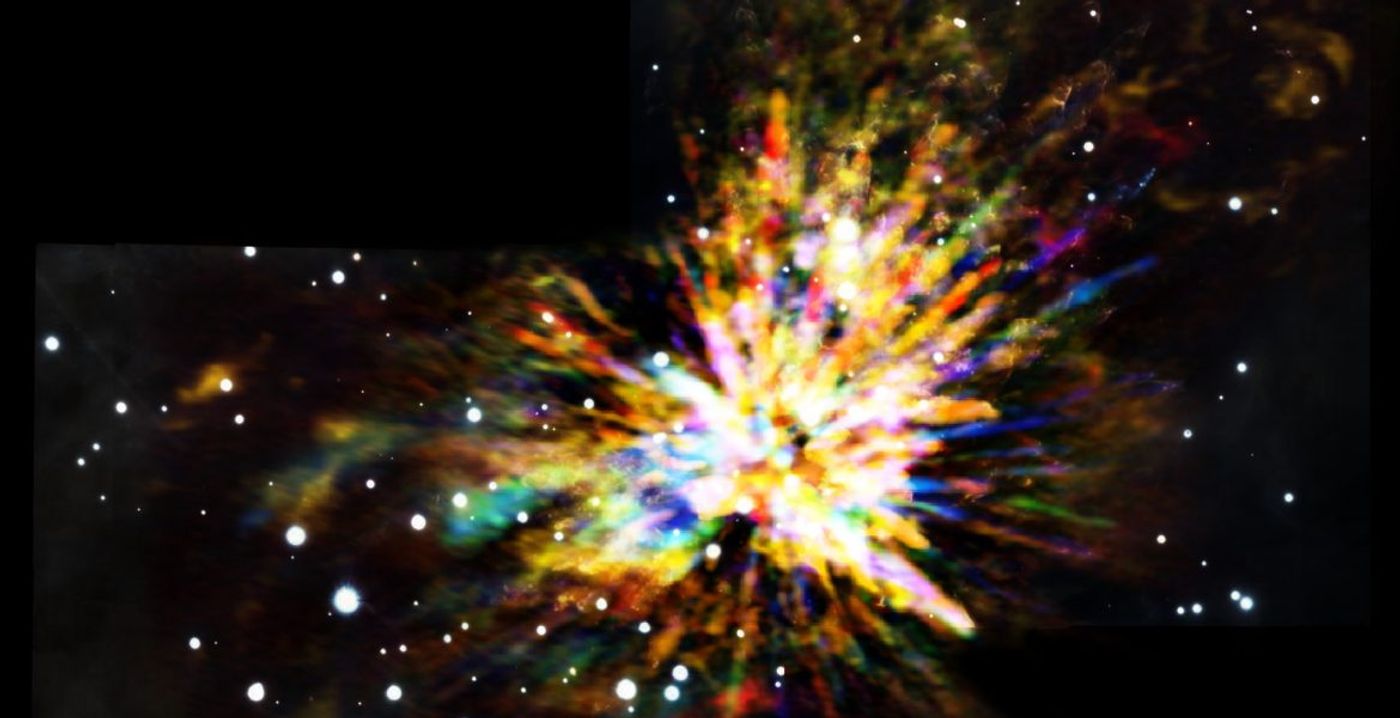ALMA Captures Images of a Stunning Protostar Collision
Some 1,500 light years away in the Orion Molecular Cloud 1 (OMC-1), an explosion resembling the colorfulness and shape of a firework on Independence Day has been spied on by the Atacama Large Millimeter/submillimeter Array (ALMA) in Chile.
As noted in The Astrophysical Journal, two protostars collided with one another after getting too close around 500 years ago. Protostars are young stars that haven’t had the time to collect as much mass as a full star; as a result, it’s one of the earliest phases in stellar evolution.
The catastrophe sent gases flying in every direction at around 150 kilometers per second, which makes up the streamer-like colorful explosion you see in the ALMA composite image below:
Image Credit: ALMA (ESO/NAOJ/NRAO), J. Bally; B. Saxton, (NRAO/AUI/NSF)
In previous observations with other equipment, astronomers note how the streamer-like arms stretch to be almost one full light year across. Astronomers were also able to identify carbon monoxide (CO) as the main gas making up the streamers.
“What we see in this once calm stellar nursery is a cosmic version of a 4th of July fireworks display, with giant streamers rocketing off in all directions,” said University of Colorado’s John Bally.
At the time, the two protostars couldn’t have been much more than 10,000 years old, which is a blink of eye when considering how long stellar objects usually last.
Explosions just like this one may be more common than originally thought, but since they only occur for short periods of time, we don’t have that many opportunities to find them unless our telescopes are pointed right at them.
Related: Are neutron star collisions responsible for creating heavy elements?
It’s also interesting to think that most stellar explosions are attributed to the death of a star at an old age, but explosions can happen at any age, given the right circumstances:
“People most often associate stellar explosions with ancient stars, like a nova eruption on the surface of a decaying star or the even more spectacular supernova death of an extremely massive star,” Bally continued. “ALMA has given us new insights into explosions on the other end of the stellar life cycle, star birth.”









